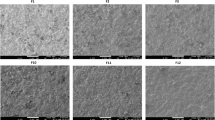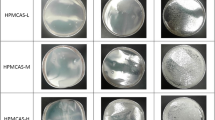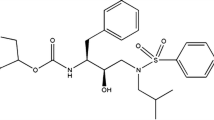Abstract
An amorphous solid dispersion (ASD) is a commonly used approach to enhancing the dissolution of poorly aqueous soluble drugs. Selecting the desired polymer and drug loading can be time-consuming. Surface properties, such as surface composition and wetting behavior, are essential factors controlling the dissolution of ASD tablets. Thus, our study aims to use surface characterization to understand the factors that affect the dissolution rate of ASD tablets. In this work, we prepared ASDs with itraconazole and hypromellose acetate succinate (HPMCAS) using spray drying. ASDs were prepared using three grades of HPMCAS and different drug loading levels (10%, 30%, and 50%). We prepared ASD tablets with two porosities. For each tablet, contact angles were measured using the Drop Shape Analyzer; surface free energies, disperse, and polar fractions were calculated based on the contact angles. We conducted near-infrared (NIR) and dissolution measurements of ASD tablets. Principal component analysis (PCA) was carried out to investigate the NIR spectra further. The relative PCA scores were reported with other sample properties. A partial least square (PLS) model using NIR scores, tablets’ wetting properties, and dissolution rates revealed that water and buffer contact angles, surface free energy, and polar fraction are the most significant factors attributing to the dissolution rate of ASD tablets. This work understood the interplay between the surface properties and the dissolution rate of ASD tablets. Moreover, surface characterization can be the tool to screen the formulation and compaction process of ASD tablets in early development.






Similar content being viewed by others
References
Démuth B, Nagy ZK, Balogh A, Vigh T, Marosi G, Verreck G, et al. Downstream processing of polymer-based amorphous solid dispersions to generate tablet formulations. Int J Pharm. 2015;486(1–2):268–86.
Newman A, Knipp G, Zografi G. Assessing the performance of amorphous solid dispersions. J Pharm Sci. 2012;101(4):1355–77.
Chiou WL, Riegelman S. Oral absorption of griseofulvin in dogs: increased absorption via solid dispersion-in polyethylene glycol 6000. J Pharm Sci. 1970;59(7):937–42.
Leuner C, Dressman J. Improving drug solubility for oral delivery using solid dispersions. Eur J Pharm Biopharm. 2000;50(1):47–60.
Chiou WL, Riegelman S. Pharmaceutical applications of solid dispersion systems. J Pharm Sci. 1971;60(9):1281–302.
Lim H, Yu D, Hoag SW. Application of near-infrared spectroscopy in detecting residual crystallinity in carbamazepine–Soluplus® solid dispersions prepared with solvent casting and hot-melt extrusion. Journal of Drug Delivery Science and Technology. 2021:102713.
Konno H, Handa T, Alonzo DE, Taylor LS. Effect of polymer type on the dissolution profile of amorphous solid dispersions containing felodipine. Eur J Pharm Biopharm. 2008;70(2):493–9.
Acartürk F, Kişlal Ö, Celebi N. The effect of some natural polymers on the solubility and dissolution characteristics of nifedipine. Int J Pharm. 1992;85(1–3):1–6.
Loftsson T, Fri H, Gu TK. The effect of water-soluble polymers on aqueous solubility of drugs. Int J Pharm. 1996;127(2):293–6.
Tian Y, Jacobs E, Jones DS, McCoy CP, Wu H, Andrews GP. The design and development of high drug loading amorphous solid dispersion for hot-melt extrusion platform. Int J Pharm. 2020;586: 119545.
Dahlberg C, Millqvist-Fureby A, Schuleit M. Surface composition and contact angle relationships for differently prepared solid dispersions. Eur J Pharm Biopharm. 2008;70(2):478–85.
Lu Y, Tang N, Lian R, Qi J, Wu W. Understanding the relationship between wettability and dissolution of solid dispersion. Int J Pharm. 2014;465(1–2):25–31.
Chokshi RJ, Zia H, Sandhu HK, Shah NH, Malick WA. Improving the dissolution rate of poorly water soluble drug by solid dispersion and solid solution—pros and cons. Drug Delivery. 2007;14(1):33–45.
Buckton G, Beezer AE. Structure-activity relationships for solubility and wettability of a number of substituted barbituric acids. Thermochim Acta. 1989;138(2):319–26.
Jermain SV, Brough C, Williams RO. Amorphous solid dispersions and nanocrystal technologies for poorly water-soluble drug delivery – an update. Int J Pharm. 2018;535(1):379–92.
Washburn EW. The dynamics of capillary flow. Phys Rev. 1921;17(3):273–83.
Alghunaim A, Kirdponpattara S, Newby B-mZ. Techniques for determining contact angle and wettability of powders. Powder Technology. 2016;287:201–15.
Staicopolus D. The computation of surface tension and of contact angle by the sessile-drop method. J Colloid Sci. 1962;17(5):439–47.
Kwok D, Gietzelt T, Grundke K, Jacobasch H-J, Neumann AW. Contact angle measurements and contact angle interpretation. 1. Contact angle measurements by axisymmetric drop shape analysis and a goniometer sessile drop technique. Langmuir. 1997;13(10):2880–94.
Fontana A. Pharmaceutical applications for water activity. Pharmaceutical Online article dated Apr. 1999;29.
Nguyen TH, Eshtiaghi N, Hapgood KP, Shen W. An analysis of the thermodynamic conditions for solid powder particles spreading over liquid surface. Powder Technol. 2010;201(3):306–10.
Young T III. An essay on the cohesion of fluids. Philos Trans R Soc Lond. 1805;95:65–87.
Fowkes FM. Dispersion force contributions to surface and interfacial tensions, contact angles, and heats of immersion. ACS Publications; 1964.
Owens DK, Wendt R. Estimation of the surface free energy of polymers. J Appl Polym Sci. 1969;13(8):1741–7.
Rabel W. Einige Aspekte der Benetzungstheorie und ihre Anwendung auf die Untersuchung und Veränderung der Oberflächeneigenschaften von Polymeren. Farbe und Lack. 1971;77(10):997–1005.
Koizumi K-i, Watanabe Y, Morita K, Utoguchi N, Matsumoto M. New method of preparing high-porosity rapidly saliva soluble compressed tablets using mannitol with camphor, a subliming material. International journal of pharmaceutics. 1997;152(1):127–31.
Jeong SH, Takaishi Y, Fu Y, Park K. Material properties for making fast dissolving tablets by a compression method. J Mater Chem. 2008;18(30):3527–35.
Yu D, Seelam RR, Zhang F, Byrn SR, Hoag SW. Evaluation of tableting performance of Poly (ethylene oxide) in abuse-deterrent formulations using compaction simulation studies. J Pharm Sci. 2021;110(7):2789–99.
Ibrahim A, Kothari BH, Fahmy R, Hoag SW. Prediction of dissolution of sustained release coated ciprofloxacin beads using near-infrared spectroscopy and process parameters: a data fusion approach. AAPS PharmSciTech. 2019;20(6):1–9.
Yu D, Li J, Wang H, Pan H, Li T, Bu T, et al. Role of polymers in the physical and chemical stability of amorphous solid dispersion: a case study of carbamazepine. Eur J Pharm Sci. 2022;169: 106086.
Honick M, Sarpal K, Alayoubi A, Zidan A, Hoag SW, Hollenbeck RG, et al. Utility of films to anticipate effect of drug load and polymer on dissolution performance from tablets of amorphous Itraconazole spray-dried dispersions. AAPS PharmSciTech. 2019;20(8):1–13.
Jaumot J, Bedia C, Tauler R. Data analysis for omic sciences: methods and applications: Elsevier; 2018.
Author information
Authors and Affiliations
Contributions
Dongyue Yu: conceptualization, methodology, data analysis, writing—original draft, writing—review, and editing.
Frederick Fiddler: conceptualization, methodology, writing—method (surface characterization), writing—review, and editing (surface characterization).
Ahmed Ibrahim: methodology, writing—review, and editing (chemometric).
Raymond Sanedrin: methodology, writing—review, and editing (surface characterization).
Heidi Tremblay: methodology, writing—review, and editing (surface characterization).
Stephen W. Hoag: conceptualization, methodology, investigation, resources, visualization, project administration, writing—review, and editing.
Corresponding author
Ethics declarations
Conflict of Interest
The authors declare no competing interests.
Additional information
Communicated by Harsh Chauhan and Robert (Bill) Williams III.
Publisher's Note
Springer Nature remains neutral with regard to jurisdictional claims in published maps and institutional affiliations.
Supplementary Information
Below is the link to the electronic supplementary material.
Rights and permissions
Springer Nature or its licensor holds exclusive rights to this article under a publishing agreement with the author(s) or other rightsholder(s); author self-archiving of the accepted manuscript version of this article is solely governed by the terms of such publishing agreement and applicable law.
About this article
Cite this article
Yu, D., Fiddler, F., Ibrahim, A. et al. Surface Characterization as a Tool for Identifying the Factors Affecting the Dissolution Rate of Amorphous Solid Dispersion Tablets. AAPS PharmSciTech 23, 282 (2022). https://doi.org/10.1208/s12249-022-02413-7
Received:
Accepted:
Published:
DOI: https://doi.org/10.1208/s12249-022-02413-7




